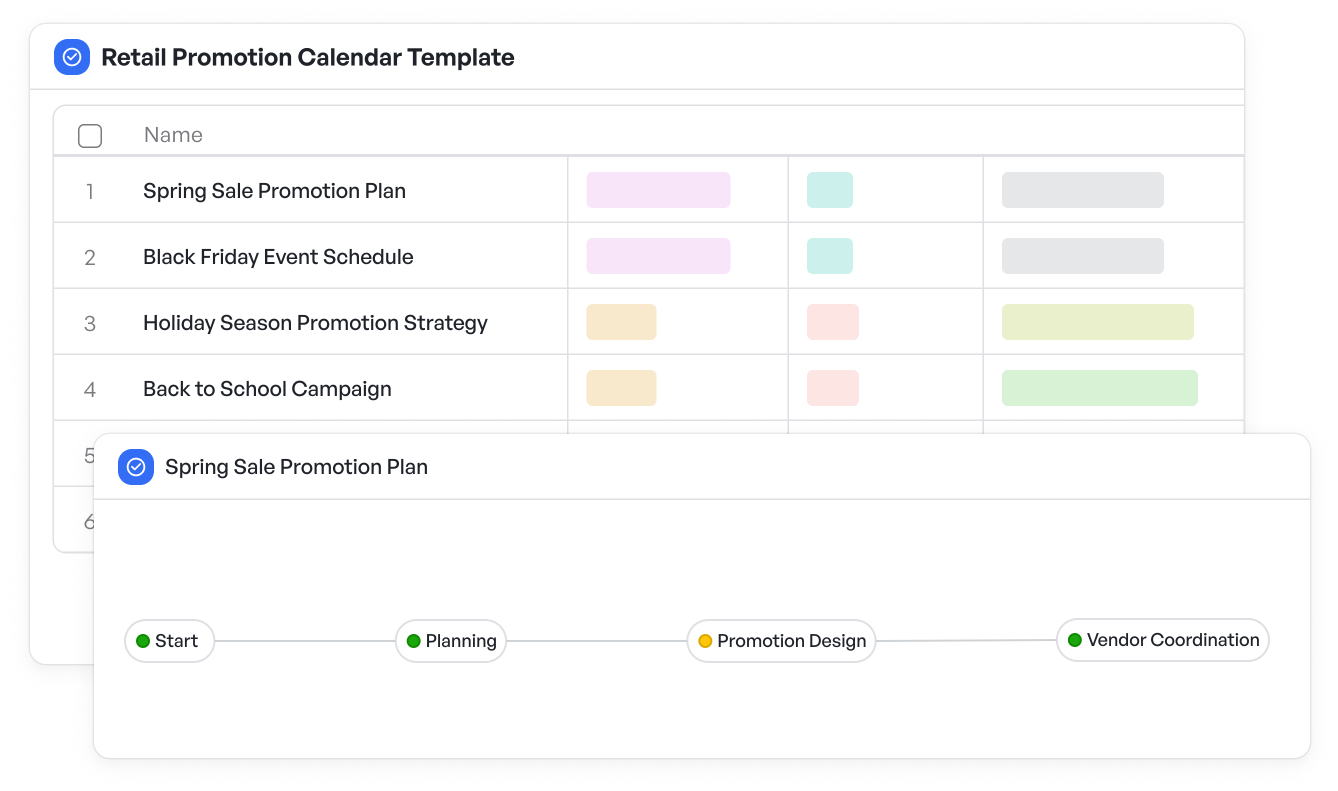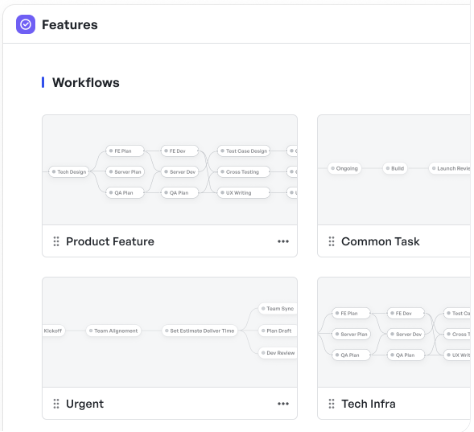How to Implement Feature-Driven Development in Retail

Retail businesses face rising complexity in managing projects that span across merchandising, supply chain, marketing, and IT systems. To keep pace with evolving customer expectations and market demands, retail teams need an Agile approach that provides clarity, focus, and continuous delivery of valuable features.
Feature-driven development (FDD) is an Agile methodology designed to break down complex projects into manageable features, ensuring each delivers measurable business value.
In the retail context, FDD helps teams deliver product updates, system enhancements, and operational improvements faster and more reliably.
To understand how feature-driven development can address these challenges, let’s explore its core principles and how it specifically benefits retail Agile projects.
Why Feature-Driven Development Fits Retail Agile Project Management
Retail projects often involve cross-functional teams working on interconnected tasks like inventory systems, point of sale (POS) systems, customer loyalty programs, and online storefronts. Managing this complexity requires a development framework that organizes work clearly and promotes frequent feedback.
FDD divides projects into client-valued features — small, meaningful pieces of functionality. This approach helps retail teams:
- Focus on delivering high-priority features first
- Improve communication across departments by making feature ownership clear
- Minimize risks through incremental delivery and early testing
- Adapt quickly to changing business needs or customer feedback.
To support this process, retail teams can benefit from tools like the retail customer journey map template. This template helps visualize and organize customer interactions and feature workflows, making it easier to prioritize work, clarify responsibilities, and incorporate feedback throughout development cycles.
Using such visual workflows aligns well with the FDD focus on delivering client-valued features efficiently and collaboratively.
 Visualize and streamline customer interactions to prioritize features and boost collaboration across retail teams
Visualize and streamline customer interactions to prioritize features and boost collaboration across retail teamsKey Steps of Feature-Driven Development in Retail Projects
Successful implementation of feature-driven development in retail involves five key steps that organize work around features, guiding teams from planning through delivery. The following list outlines these phases:
1. Develop an Overall Retail Domain Model
Begin by mapping out the essential business processes, systems, and roles involved in the retail project. This high-level model helps establish context and clarifies how individual features contribute to the broader retail operation.
For example, visualizing the retail customer journey map template can provide valuable insights into customer interactions and key touchpoints, which guides feature planning effectively.
2. Build a Feature List
Translate project objectives into a detailed list of features that align with the priorities of clients and stakeholders. Features might include “add customer segmentation filters” or “implement real-time stock alerts.”
Using the retail demand management template can help organize and prioritize these features by capturing demand patterns and customer needs, ensuring the list reflects business realities.
 Retail demand management template for demand-driven feature prioritization
Retail demand management template for demand-driven feature prioritization3. Plan by Feature
With the feature list in hand, prioritize based on business impact, dependencies, and deadlines. This planning stage helps retail teams set achievable short-term goals that align with seasonal promotions or product launches.
The retail promotion calendar template is a valuable tool for synchronizing feature delivery with marketing campaigns and retail events.
 Plan and align feature delivery with key retail campaigns and promotions
Plan and align feature delivery with key retail campaigns and promotions4. Design by Feature
Create detailed designs and specifications for each feature, including workflows, UI mockups, and technical requirements. This step ensures everyone understands what needs to be built.
5. Build by Feature
Develop, test, and deliver features incrementally. Continuous integration and feedback loops help retail teams detect issues early and adjust plans as needed.
Each step focuses on delivering value to retail operations, increasing transparency and predictability throughout the project lifecycle.
Benefits of Feature-Driven Development in Retail Teams
Retail businesses that adopt FDD often experience clear improvements in project execution and team collaboration. Some notable benefits include:
- Faster time-to-market: Breaking projects into small features enables incremental releases, reducing delays and accelerating delivery of customer-facing updates.
- Improved visibility: Feature-level tracking provides managers and stakeholders with real-time insight into progress and allows them to analyze potential bottlenecks.
- Cross-department collaboration: Clear feature ownership helps align retail, marketing, and IT teams, reducing miscommunication.
- Better risk management: Early delivery and testing of features limit costly rework and allow for quicker course correction.
- Adaptability: Agile cycles and feature-based planning support retail’s need to respond swiftly to market trends, promotions, and inventory changes.
These benefits align closely with the demands of mid-market and enterprise retail companies aiming to maintain a competitive advantage.
Using Visualized Workflows to Support Feature-Driven Development in Retail
Visual workflows are a powerful tool that complements feature-driven development, especially in complex retail environments. They represent the sequence of steps and decision points for each feature, making the process transparent for everyone involved.
Retail teams can see:
- The current status of each feature
- Assigned roles and responsibilities
- Dependencies between features
- Expected completion timelines.
This visibility allows teams to coordinate efficiently and keep projects moving forward with fewer misunderstandings.
Retailers managing multiple projects across locations or departments find that visual workflows reduce confusion and help keep everyone aligned on priorities and progress.
 Workflow visualization in Meegle
Workflow visualization in MeegleHow to Implement Feature-Driven Development Retail Teams Successfully
Adopting feature-driven development in retail requires thoughtful planning and support. Here are some practical recommendations for retail project leaders:
- Engage stakeholders early: Collaborate with merchandising, IT, marketing, and operations to define a shared domain model and feature list.
- Use tools that support visual workflows: Choose project management tools that allow clear visualization of features and progress to improve transparency.
- Train teams on Agile and FDD principles: Ensure all participants understand the value of feature-based planning and iterative delivery.
- Schedule frequent check-ins: Hold regular reviews to discuss completed features, gather feedback, and reprioritize the backlog.
- Start small and scale gradually: Pilot FDD on a key retail project before expanding to larger programs.
These practices help retail teams get the most out of feature-driven development and deliver projects that meet business goals on time.
Accelerate Retail Project Success with Feature-Driven Development
Implementing feature-driven development in retail creates a clearer, more focused approach to managing complex projects.
Retail teams gain better control over feature delivery, improve communication across departments, and can adapt quickly to changing market demands. The result is faster product updates that drive customer satisfaction and business growth.
To experience how feature-focused workflows can benefit your retail projects, try a flexible Agile project management tool that visualizes workflows clearly and simplifies collaboration.
Try Meegle and manage retail initiatives with agile workflows that adapt to every feature rollout.
The world’s #1 visualized project management tool
Powered by the next gen visual workflow engineRead More
Check All BlogsStart creating impactful work today



